Earlier this year the organisers of the Formula 1 Gran Premio de Mexico 2015 decided to rename the final corner of the newly redeveloped Autodromo Hermanos Rodriguez circuit in honour of Nigel Mansell, a two-time winner of the Mexican Grand Prix. As F1 racing returns to the country for the first time in 23 years, we asked the 1992 world champion to share some of his favourite memories of racing there…
A striking first impression
After a 16-year hiatus, Formula One racing returned to Mexico City in 1986 - in the midst of a golden period for the sport, but a truly tumultuous one for the Mexican capital. In the year leading up to the event the city had been rocked by a deadly earthquake and several large aftershocks, causing extensive damage to buildings and roadways. “The first event we went to, the shock was the aftermath of the quake,” recalls Mansell. “I remember helicopters being laid on for certain drivers to fly to the circuit so we wouldn’t have problems with the traffic. But it was a very vibrant event. It’s such a unique place, so different to anywhere else in the world.” As for the circuit, Mansell says the brutish turbo cars of the day made it a ‘fantastic challenge’: “With the track being at the altitude it is [over 2,000 metres above sea level], the cars had 20 percent less grip aerodynamically, but because of the turbos - which were working very, very well at that stage - we still had quite a lot of power.” The ‘86 race, the penultimate Grand Prix of the season, will be remembered for Gerhard Berger making full use of his durable Pirelli tyres to deliver his - and the Benetton team’s - first F1 victory. Mansell, meanwhile, came home fifth behind title rivals Alain Prost and Nelson Piquet.
A hard track to master
The drivers always knew they were in for a punishing test of skill and endurance when they arrived in Mexico - and not just because they were competing at such high altitude. “Mexico was a ‘moody’ circuit,” Mansell explains. “People forget that when you are racing in a huge city like Mexico City, the smog and dust can settle on the track as you’re actually racing. As a result, grip was a moving target. The track seemed to draw you in - you’d go round a corner and build confidence in it. That was especially true at Peraltada [the flat-out, banked right-hander at the end of the lap]. You’d think ‘there’s grip, I can lean on it a little bit more’. I think that’s what happened to Ayrton [Senna, whose heavy crash at Peraltada during practice in ‘91 is featured in the video above]. He obviously felt reasonably comfortable, and then he went in a bit quicker the next lap and the grip wasn’t there…” Bumps were also a massive issue, and the cause of more than one major accident. “I believe the circuit was built on an old lake bed, so it was prone to moving,” Mansell reveals. “So a bump that wasn’t there the day before could appear overnight. You were looking for new lines, thinking ‘I got that corner right yesterday and now I’m having trouble with it.’ It was extraordinary really and because of that it was a fantastic challenge every time we went out. The thing that we found great difficulty with was to try to get the balance with the car, because you could get it balanced for certain corners but you couldn’t get it balanced for the whole circuit for whatever reason. There was such a variety of corners that the car was always partly good on some and very difficult in others.”
A race of two halves
The first of Mansell’s record-equalling two Mexican wins came in 1987, in what proved to be an eventful and highly unusual race. The Englishman had qualified his Williams on pole but dropped back to fifth at the start, before a tangle between team mate Nelson Piquet and McLaren’s Alain Prost promoted him back up to P3. Mansell then inherited a healthy lead on lap 21 as first Thierry Boutsen and then Gerhard Berger retired, but the real drama was yet to come. On lap 26 Derek Warwick shunted his Arrows-Megatron at Peraltada and brought out the red flags - an unusual occurrence at the time. After a brief delay, a new grid was formed up based on the order before the crash, with the race now set to be decided on aggregate - not on track position. Mansell seemed to briefly forget this after the re-start by getting embroiled in an unnecessary battle with Piquet, but with a 45s advantage in his pocket from the first ‘heat’, Mansell was eventually content to follow his team mate home. “It’s always a mixture of feelings [when the race is stopped],” Mansell explains, “because the people who are chasing when the race is restarted think they have a bit of an advantage and the people who have done a good job think ‘I’ve got to get going again now’. I didn't like to have to stop because I was sitting very well in first place with an advantage of over 30 seconds. In the second half of the race it was just a question of just using the time I had [in hand].”
A pair of disappointing races
After triumphing in ’87, Mansell’s next two visits to Mexico would end in disappointment as reliability problems put paid to his chances. In the ’88 race, won by McLaren’s Alain Prost from team mate Ayrton Senna, a misfiring engine forced Mansell into an early exit, but even so he remembers the race with affection because of his great getaway from 14th on the grid. “I made a fantastic start and overtook about five cars,” he remembers. “The great thing about the starts back then was that it was all in the hands of the driver - you had control of the clutch, you had control of the engine revs. It was very important that you engaged everything just right and then you could make a jump on other drivers who hadn’t done such a good job. It was a long run down to the first corner in Mexico, so if you got the momentum it could work really well in your favour. But if you made a duff start, my goodness me, you could almost end up at the back of the grid.” In 1989, Mansell recorded another DNF, this time retiring from second place because of an issue with his Ferrari’s revolutionary semi-automatic gearbox. “We had a terrible time that year with reliability problems,” he recalls. “It was amazing how few races we finished.”
A pass for the ages
Prost was victorious again in 1990 after Senna was slowed (and then eliminated) by a puncture, but it is Mansell’s tremendous battle with - and heroic pass on - Gerhard Berger for which the race is best remembered. The duo began their wheel-to-wheel dice for second place three laps from the flag when Berger slung his McLaren up the inside of Mansell’s Ferrari at Turn 1. “He locked up and if I’d turned into the corner he would have T-boned me and we would both have been out of the race,” recalls Mansell. “It was very rude and I thought ‘there’s no way you’re going to get second place by driving like that!’” The Englishman quickly closed back up to the Austrian’s gearbox, but with Berger closing the door in all the usual passing spots, Mansell had to attempt something altogether more audacious - a move at the daunting Peraltada. “That was sheer lunacy at its best!” laughs Mansell today. “I think Gerhard was surprised - it’s not a manoeuvre you do. It’s an outrageous manoeuvre and I think he backed out because he thought there was probably going to be a big accident that he might be involved in. The element of surprise was key. If you take someone’s wind out of their sails, especially when you’re driving a car at those speeds, and then the car has a wobble as well, then any normal, sane person would back out of it. To get him back was fantastic. It was probably one of the most daring overtaking manoeuvres in F1 history.”
A much harder race than it looked
After finishing a close second to Williams team mate Riccardo Patrese in 1991, Mansell returned to the top spot of the Mexican rostrum in 1992 after a dominant performance from pole position. But despite beating Patrese by 12s - and F1 podium debutant Michael Schumacher by 21s - Mansell insists the victory was not as easy as it seemed: “Mexico was a track where if you could have any advantage at all you wanted it in your pocket because you knew you could have a problem at any time. You just had to keep pushing, pushing, pushing. So although ‘92 looked straight forward it was far from it. I was worried I had a problem after the warm-up lap when I had a snap oversteer. The team had to do a lot of work to the car on the grid, but it ran perfectly after that.” It would prove to be the second of five consecutive wins for Mansell at the start of a triumphant title-winning campaign, but it would also go down as the last victory for any driver on Mexican soil for 23 years. Who will join that roll of honour this weekend?
Next Up
Related Articles
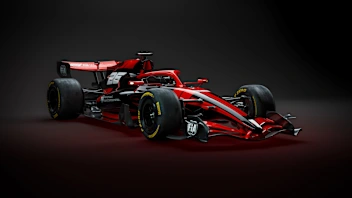 GALLERY: Check out renders of the innovative 2026 car
GALLERY: Check out renders of the innovative 2026 car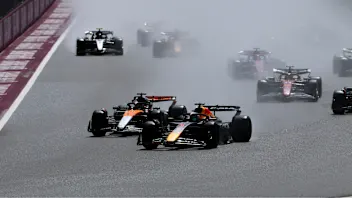 REVEALED: Your favourite race of the 2025 season
REVEALED: Your favourite race of the 2025 season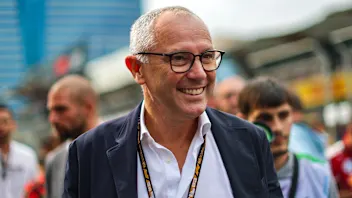 F1 CEO Domenicali reflects on 'phenomenal' 2025
F1 CEO Domenicali reflects on 'phenomenal' 2025.webp) Winners & Losers5 Winners and 5 Losers from the 2025 season
Winners & Losers5 Winners and 5 Losers from the 2025 season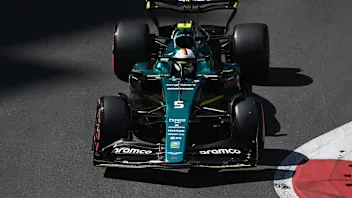 11 times F1 drivers took another driver’s car number
11 times F1 drivers took another driver’s car number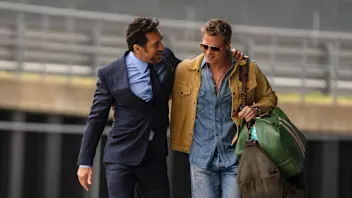 10 ways to get your Formula 1 fix during the winter break
10 ways to get your Formula 1 fix during the winter break